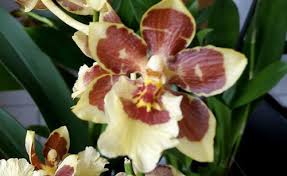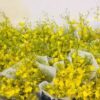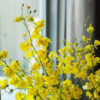# Exploring Famous Collections of Dancing Lady Orchids

Dancing Lady Orchids, known scientifically as *Oncidium*, are among the most captivating and diverse orchids available today. These unique orchids, characterized by their vibrant colors and distinctively shaped flowers resembling a dancing figure, have fascinated collectors, botanists, and orchid enthusiasts alike. In this extensive guide, we will explore some of the most famous collections of Dancing Lady Orchids around the world, delving into their histories, unique features, cultivation practices, and the cultural significance of these beautiful plants.
## Table of Contents
1. [Introduction to Dancing Lady Orchids](#introduction-to-dancing-lady-orchids)
2. [The Historical Significance of Orchid Collections](#the-historical-significance-of-orchid-collections)
3. [Notable Collections of Dancing Lady Orchids](#notable-collections-of-dancing-lady-orchids)
– 3.1 [The National Orchid Garden, Singapore](#the-national-orchid-garden-singapore)
– 3.2 [The Royal Botanic Gardens, Kew, UK](#the-royal-botanic-gardens-kew-uk)
– 3.3 [The Huntington Library, Art Museum, and Botanical Gardens, USA](#the-huntington-library-art-museum-and-botanical-gardens-usa)
– 3.4 [The Orchid Conservation Program, Thailand](#the-orchid-conservation-program-thailand)
– 3.5 [The U.S. Botanic Garden, Washington D.C.](#the-us-botanic-garden-washington-dc)
4. [The Cultivation and Care of Dancing Lady Orchids](#the-cultivation-and-care-of-dancing-lady-orchids)
5. [The Cultural Significance of Dancing Lady Orchids](#the-cultural-significance-of-dancing-lady-orchids)
6. [Visiting Orchid Collections: Tips for Enthusiasts](#visiting-orchid-collections-tips-for-enthusiasts)
7. [The Future of Dancing Lady Orchid Collections](#the-future-of-dancing-lady-orchid-collections)
8. [Conclusion](#conclusion)
—
## 1. Introduction to Dancing Lady Orchids
Dancing Lady Orchids belong to the family Orchidaceae and are primarily found in the tropical regions of Central and South America. They thrive in a variety of habitats, from rainforests to grasslands. The name “Dancing Lady” comes from the flower’s unique shape, which resembles a woman in a flowing dress, often making it a favorite among orchid lovers and collectors.
Dancing Lady Orchids are not only admired for their beauty but also for their diversity. The genus *Oncidium* includes numerous species and hybrids, each with its own distinct color palette, flower shape, and growth habit. This diversity makes them a prominent choice for botanical gardens and private collections worldwide.
## 2. The Historical Significance of Orchid Collections
The fascination with orchids dates back centuries, with many cultures revering these plants for their beauty, rarity, and medicinal properties. The rise of orchid collecting can be traced to the Victorian era when wealthy botanists and horticulturists sought to acquire rare species from around the world.
The establishment of botanical gardens and orchid collections became a way to preserve these unique plants, promote research, and educate the public about their significance. Dancing Lady Orchids have become a prominent feature in many of these collections, showcasing their striking appearance and adaptability.
Over the years, these collections have played a crucial role in the conservation of orchid species, many of which are threatened by habitat loss and environmental changes. Today, orchid collections serve not only as repositories of plant diversity but also as centers for research, education, and conservation efforts.
## 3. Notable Collections of Dancing Lady Orchids
### 3.1 The National Orchid Garden, Singapore
The National Orchid Garden is part of the Singapore Botanic Gardens and is home to the largest collection of orchids in the world, featuring over 1,000 species and 2,000 hybrids. Among these, the Dancing Lady Orchids are a highlight.
#### Unique Features:
– **Variety of Species**: The collection includes numerous *Oncidium* species, showcasing their diversity in shape and color.
– **Orchid hybrids**: Many hybrid varieties have been developed, displaying unique flower patterns and color combinations.
#### Significance:
The National Orchid Garden serves as a vital center for orchid research and conservation, promoting awareness of the need to protect these beautiful plants and their habitats. The garden’s commitment to education helps inspire future generations to appreciate and conserve orchids.
### 3.2 The Royal Botanic Gardens, Kew, UK
Located in London, the Royal Botanic Gardens at Kew is a UNESCO World Heritage site known for its extensive collection of plants, including a significant number of orchids. The *Oncidium* collection is particularly noteworthy.
#### Unique Features:
– **Historical Significance**: Kew’s orchid collection dates back to the 18th century, making it one of the oldest in the world.
– **Scientific Research**: The gardens play a crucial role in the study of plant biology, including research on the genetic diversity of orchids.
#### Significance:
Kew Gardens is instrumental in orchid conservation efforts, contributing to the preservation of endangered species through its research initiatives and breeding programs. The gardens also serve as an educational hub for the public and researchers alike.
### 3.3 The Huntington Library, Art Museum, and Botanical Gardens, USA
Located in San Marino, California, The Huntington is home to an impressive collection of over 1,200 orchid species, including many Dancing Lady Orchids.
#### Unique Features:
– **Diverse Collection**: The orchid collection features rare and unusual species, making it a must-visit for orchid enthusiasts.
– **Research and Education**: The Huntington’s botanical gardens provide valuable resources for studying orchid taxonomy and ecology.
#### Significance:
The Huntington’s focus on conservation and education helps raise awareness about the importance of protecting orchid habitats and encourages sustainable practices among collectors and growers.
### 3.4 The Orchid Conservation Program, Thailand
Thailand is renowned for its rich diversity of orchids, and the Orchid Conservation Program is dedicated to preserving the country’s native orchid species, including Dancing Lady Orchids.
#### Unique Features:
– **Conservation Efforts**: The program focuses on in-situ and ex-situ conservation, ensuring that orchids are protected in their natural habitats while also being cultivated in botanical gardens.
– **Community Engagement**: Local communities are involved in conservation efforts, promoting sustainable practices and awareness.
#### Significance:
The program plays a crucial role in protecting Thailand’s orchid biodiversity, emphasizing the importance of conservation and education in safeguarding these beautiful plants for future generations.
### 3.5 The U.S. Botanic Garden, Washington D.C.
The U.S. Botanic Garden is home to a diverse collection of plants, including a significant number of orchids. The Dancing Lady Orchids are a key feature of their orchid exhibit.
#### Unique Features:
– **Educational Programs**: The garden offers various educational programs, workshops, and exhibits focused on orchid cultivation and conservation.
– **Seasonal Displays**: The U.S. Botanic Garden hosts seasonal orchid exhibits, showcasing the beauty and diversity of orchids, including *Oncidium* species.
#### Significance:
The U.S. Botanic Garden serves as a vital resource for education and research, promoting awareness of the importance of biodiversity and conservation among the public.
## 4. The Cultivation and Care of Dancing Lady Orchids
Cultivating Dancing Lady Orchids requires specific care to ensure their growth and health. Here are some key considerations for orchid enthusiasts:
### Light Requirements
Dancing Lady Orchids thrive in bright, indirect sunlight. Direct sunlight can scorch their leaves, while too little light can hinder blooming.
### Temperature and Humidity
These orchids prefer warm temperatures between 65°F and 80°F (18°C to 27°C) during the day and slightly cooler at night. Humidity levels should be maintained at around 50-70% for optimal growth.
### Watering and Fertilization
– **Watering**: Water the orchids when the top inch of the growing medium feels dry. Overwatering can lead to root rot, so ensure proper drainage.
– **Fertilization**: Use a balanced orchid fertilizer every two weeks during the growing season to promote healthy growth and blooming.
### Repotting
Dancing Lady Orchids should be repotted every 1-2 years or when the growing medium breaks down. Use a well-draining orchid mix to support their growth.
## 5. The Cultural Significance of Dancing Lady Orchids
Dancing Lady Orchids hold cultural significance in various societies, often symbolizing beauty, elegance, and prosperity. In many Asian cultures, orchids are associated with luxury and are often used in traditional ceremonies, celebrations, and as gifts.
– **Festivals and Celebrations**: Orchids are commonly used in floral arrangements for weddings, festivals, and other special occasions, representing love and beauty.
– **Traditional Medicine**: In some cultures, parts of the Dancing Lady Orchid are used in traditional medicine, believed to have healing properties.
Understanding the cultural significance of these orchids enhances their value beyond mere aesthetics, highlighting their role in human history and traditions.
## 6. Visiting Orchid Collections: Tips for Enthusiasts
For orchid enthusiasts, visiting famous collections of Dancing Lady Orchids can be an enriching experience. Here are some tips for making the most of your visit:
– **Plan Ahead**: Check the collection’s website for information on special exhibits, guided tours, or educational programs.
– **Take Notes**: Bring a notebook to jot down observations about different species, their care requirements, and any cultivation tips shared by staff.
– **Engage with Experts**: Don’t hesitate to ask questions or engage with horticulturists and experts on-site to gain
insights into orchid care and conservation.
– **Capture the Beauty**: Bring a camera to document your experience and the stunning varieties of Dancing Lady Orchids you encounter.
## 7. The Future of Dancing Lady Orchid Collections
As interest in orchids continues to grow, the future of Dancing Lady Orchid collections looks promising. Conservation efforts and advancements in horticultural techniques are paving the way for a brighter future for these beautiful plants.
### Conservation Efforts
Ongoing conservation efforts are essential for protecting endangered orchid species. Collaborative programs between botanical gardens, conservation organizations, and local communities are crucial for safeguarding these precious plants.
### Research and Innovation
Research into orchid genetics, breeding techniques, and pest management will help enhance the resilience and diversity of Dancing Lady Orchids. Innovative approaches to cultivation can lead to new hybrids and improved care practices.
### Public Engagement
Increasing public engagement through educational programs, workshops, and community events can foster a deeper appreciation for orchids. Encouraging individuals to cultivate orchids at home can contribute to their conservation and appreciation.
## 8. Conclusion
Dancing Lady Orchids are a testament to the beauty and diversity of the orchid family. Their captivating appearance and rich history make them a cherished collection in botanical gardens around the world. By exploring famous collections, we not only appreciate the beauty of these remarkable plants but also gain insight into the importance of conservation and education.
As we look to the future, the continued dedication to preserving Dancing Lady Orchids and their habitats will ensure that future generations can enjoy their splendor. Whether you are a seasoned collector or a novice enthusiast, the journey of exploring and cultivating Dancing Lady Orchids is a rewarding and enriching experience that connects us to nature’s wonders.

